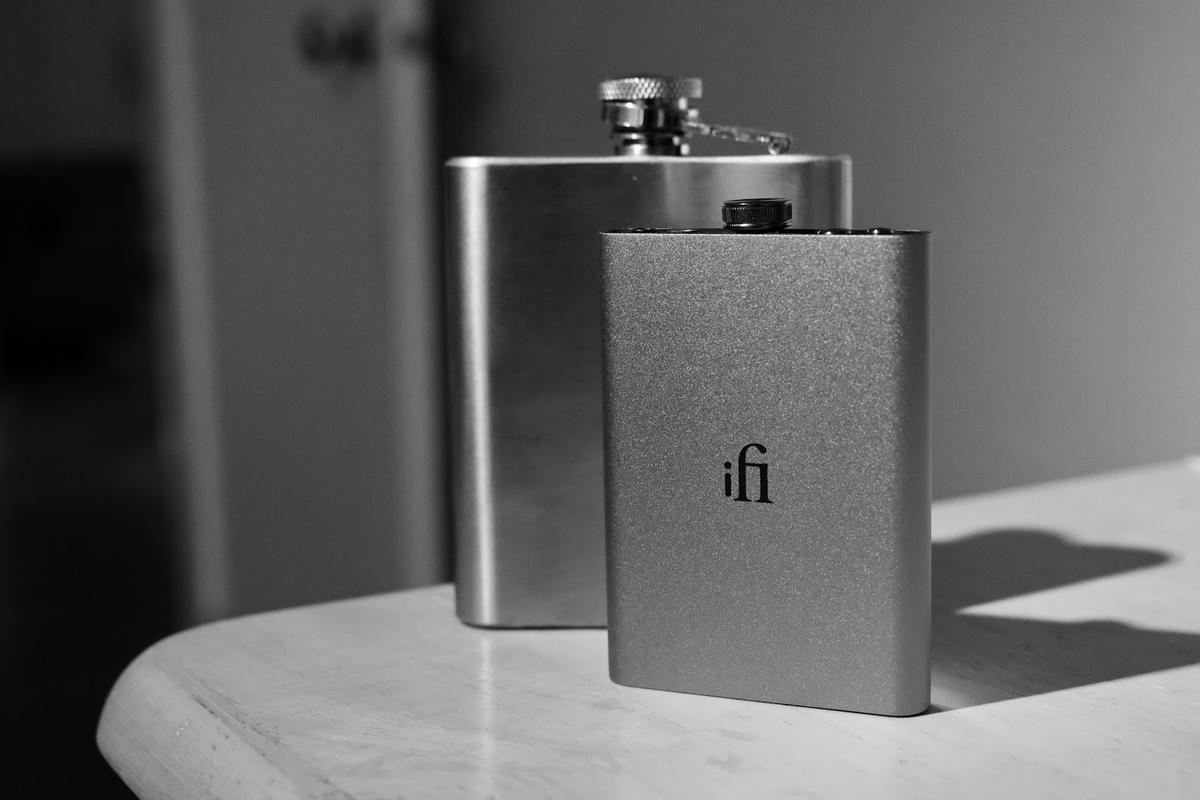This cute and capable DAC/amp is ready to enhance your portable listening experience.
The removal of the headphone jack from almost all smartphones created a practical problem for consumers. Bluetooth has enabled on-the-go listening without the need for wires, but at the price of compromised audio quality. So what happens when you’re commuting, out walking, or travelling away from home?
Fortunately, this problem for consumers is also a great new opportunity for high end audio manufacturers, and there is a plethora of solutions on the market that improve on phone manufacturers’ options. Simple dongle DACs have proved popular, and can offer impressive audio performance, but they’re necessarily limited by their form factor in terms of ports and controls.
- Slick design that’s highly totable
- Revealing and natural sounding midrange
- PowerMatch and XBass help with pairing
- Lacking in energy, particularly with power-hungry headphones
- Soft, grainy treble response
- Status LEDs could be easier to see
There’s also the issue of how they’re powered, with most drawing power from the host device, often having a pretty significant impact on battery life. Not great when our phones are so vital to our daily lives.
If you don’t mind carrying something a little larger then there are some exceptionally good options on the market that address these challenges. The hip-dac2 is a combined DAC/amp, updated from its original version, with its own battery on board and a practical selection of ports and controls.
Company Overview
iFi Audio started in the UK back in 2012 with a mission to offer no-compromise audio components that go where the customer does, and they’ve developed a solid reputation over the past decade.
To this day they oversee design, development and manufacture of their products from the UK. Components are sourced from manufacturers all over the globe, and the company takes pride in its environmental credentials, which touch both the packaging and the products themselves.
Technical Specifications
- Form: Portable / DAC / Amp
- Headphone Output Power (Single-Ended): 280mW@32Ω; 3.2V@600Ω at 1% THD
- Headphone Output Power (Balanced): 400mW@32Ω; 6.3V@600Ω at 1% THD
- Digital Inputs: USB Type A
- Digital Formats: PCM/MQA 834kHz, DSD256, DXD
- Headphone Outputs: 4.4mm balanced, 3.5mm single-ended
- Battery: 2,200mAH (8 hours battery life)
- Dimensions: 10.2 x 7 x 1.4cm
- Weight: 125g
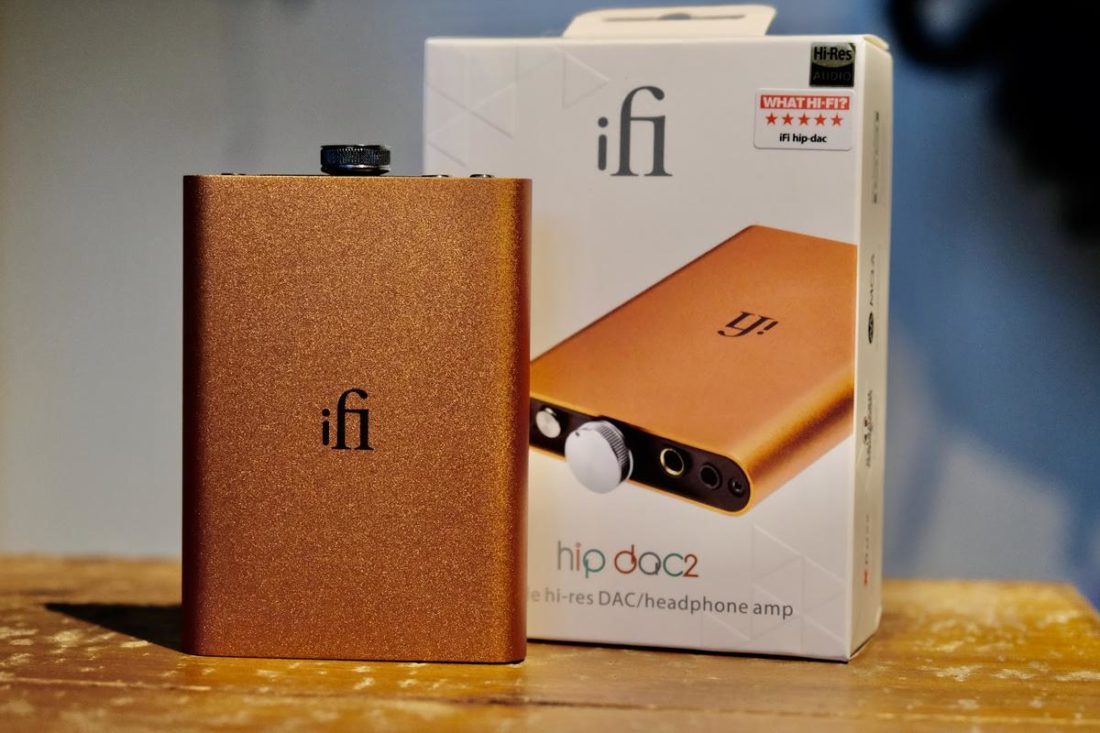
Packaging
The hip-dac2 is a compact unit, and comes packaged in an equally compact box. The box is nothing special to look at, but does provide all the essentials to know about the unit, making it perfect for a retail shelf. The packaging scores well for recyclability when you’re done with it – no unnecessary padding here.
In the box
- The hip-dac2
- Optional stick-on feet
- USB Type A male to female adapter cable
- USB Type C to USB Type A male adapter cable
- USB C charging cable
- Quick start reference card
- Warranty card
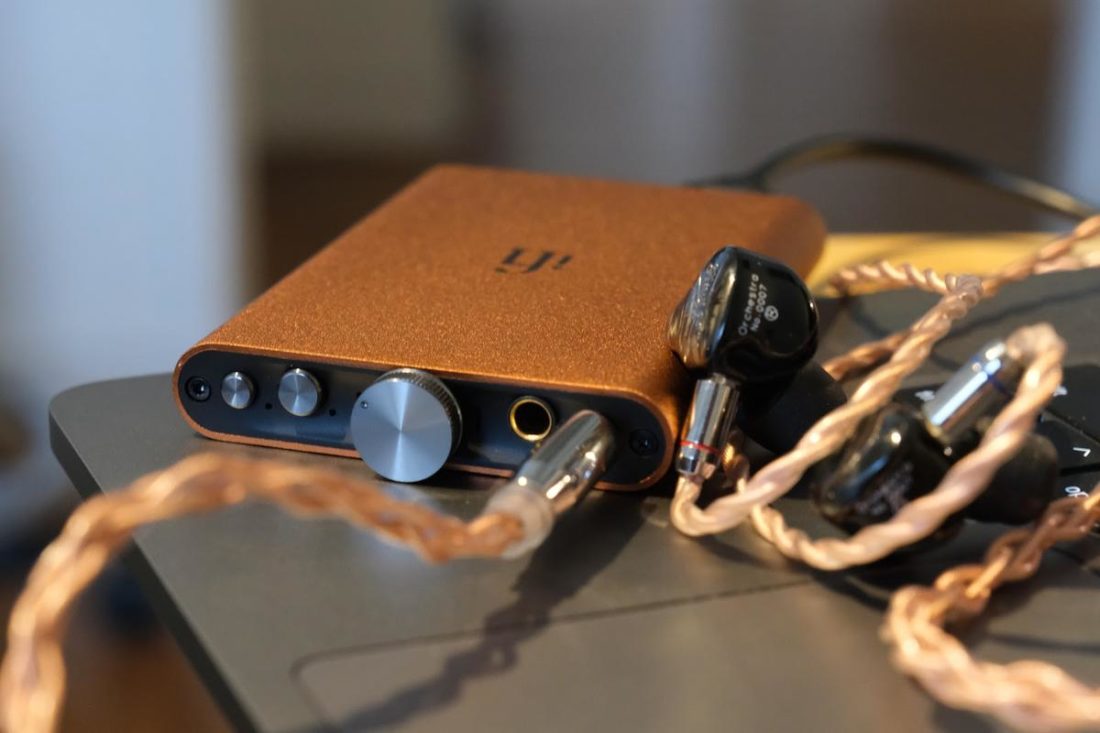
Design
The hip-dac2, like its predecessor, is an irresistibly cute product to look at and to hold. As the name suggests, when stood upright it closely resembles a hip flask, and is about the same size and shape. The dimensions make it extremely pocketable and comfortable to hold in the hand. It’s also lightweight at 125g, coming in at less than today’s smartphones. Perfect for portable use.
In a change from the blue first version, the hip-dac2 comes in a gorgeous sunset orange color, and looks great from every angle, without being overstated. The quality of the fit and finish is very high, from the aluminum casing to the titanium colored buttons and volume control. There’s an equally cute faux-suede ‘hip-case’ available to protect your hip-dac2 when on the move.
Ergonomically, whilst the size and lightness are perfect for a portable unit, the controls can’t be used one-handed. You’ll need to grip the unit with one hand to operate the controls with the other. Not a big deal, but worth noting.
Common to other portable non-dongle DACs, its size makes it a little awkward to carry along with a phone. Some people literally strap their phones to their portable DACs. iFi includes guidance for the fitting of dual lock fasteners, for those who wish to attach the hip-dac2 to a phone case.
There’s no easy solution here, and iPhone users will find it particularly frustrating thanks to the need for an additional lightning to USB adapter, but I guess this is the price you pay for taking the audio experience up several notches.
The hip-dac2 is adorably cute, and finished to a high standard.
Interfaces
For its diminutive size, iFi has done a commendable job of cramming multiple useful interfaces and controls into the hip-dac2. The front has both 3.5mm single ended and 4.4mm balanced ports. Whilst there’s some debate about the true merits of balanced for portable use, there’s no denying that the 4.4mm jack/port design makes for a much more robust attachment when out and about and does provide more output power.
The USB ports are interesting. A male Type A port was chosen to provide greater structural integrity, according to iFi. That’s good design, from a longevity perspective. It just means you can’t grab any old USB cable, and will need to ensure you use what’s included in the box, or source your own male/female adapter.
The USB C port can only be used for charging, which is unfortunate, but doubtless again for solid design reasons. There’s a tiny charging/battery LED under this port, although this placement means you can’t see it from above, where you’ll normally be, relative to the unit. Again, no big deal.
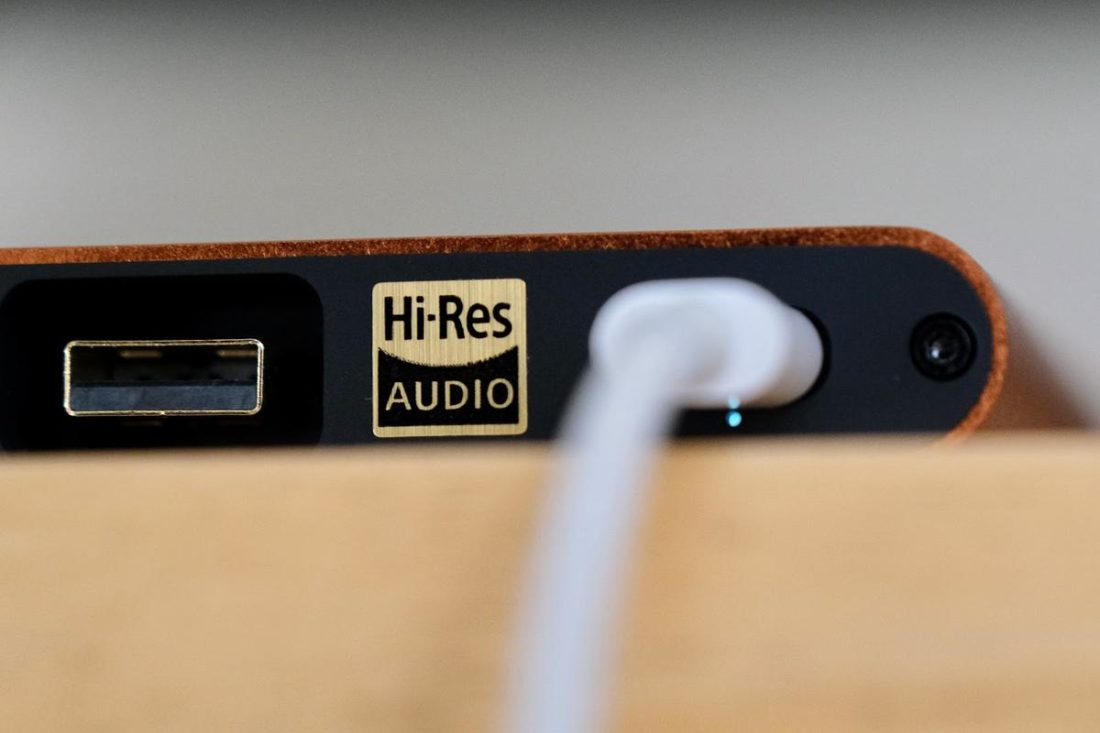
Controls
Front and center is the combined power switch and analog volume knob. As noted, it can’t easily be used one-handed, but has a quality feel and provides a nice click feedback, in case you’re not looking at the unit whilst turning it on or off. When on, there are contoured LEDs on either side of the knob which denote the digital audio format of the music playing.
Moving left from there, there’s an XBass button, which iFi refers to as an ‘analog headphone spatializer’. I don’t mind admitting that when I first saw this I had flashbacks to the many terrible implementations of boosted bass I’ve encountered on portable audio gear over the years. There’s nothing over the top about the implementation here, so this will just be down to the type of headphones used, and your own listening preference.
Finally, another interesting button labelled ‘PowerMatch’, which is what’s usually referred to as gain. The recommendation is to have this off for IEMs, and on for headphones. It certainly makes a noticeable difference.
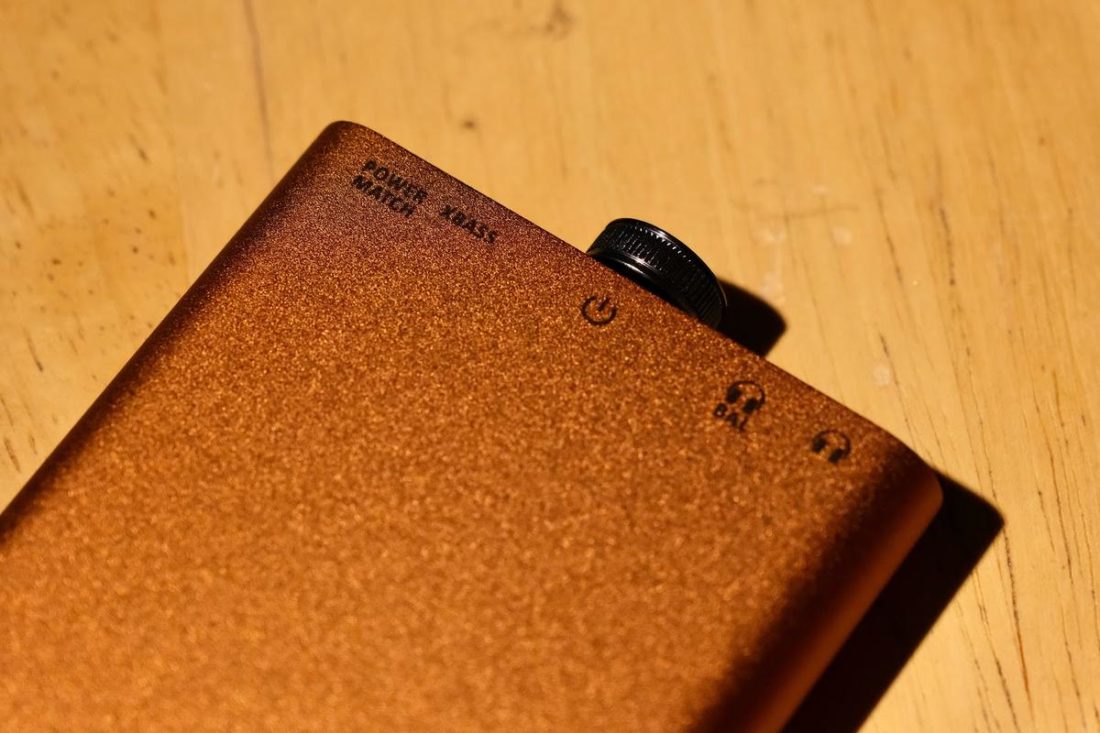
Useful sound controls help with supporting a range of headphones and IEMs.
Internals
iFi has clearly had good results with Burr Brown chips, and uses them across their range of products. The hip-dac2 features a Burr Brown DSD1793 chipset, which enables true DSD conversion as well as the new MQA decoding features specific to this new version of the hip dac.
There’s also an upgraded timing clock, which helps to reduce jitter in the digital stage that can lead to distortion. Another distortion related enhancement is iFi’s proprietary S-Balanced circuitry, which is particularly focused on the single-ended 3.5mm port, helping enhance performance for IEMs and headphones using that port with some of the advantages of a balanced connection.
iFi hip-dac2 Sound
Given that this is clearly a unit designed to be used on the go, or while travelling, for my testing I connected the hip-dac2 to an Android phone and a Macbook, playing a combination of streamed and on-device files. Both of these have their own headphone ports, so I was able to get a sense for the level of improvement over stock.
For listening, I used the Kiwi Ears Orchestra IEMs via the single-ended 3.5mm port, and for more of a load challenge, my 300 Ohm Sennheiser HD650 headphones, connected to the 4.4mm balanced port.
Overall I found the iFi easily justified itself as an improvement over the onboard DAC/amps when paired with IEMs, offering a more detailed and rich presentation than either the smartphone or the Macbook. An unexpected surprise was just how useful the PowerMatch and XBass buttons on the hip-dac2 proved to be.
Performance with my more demanding HD650s was less impressive, even with PowerMatch turned on. I found the sound more closed-in, less spacious, lacking sparkle. The hip dac has a reputation for having a relatively warm sound signature, as do the HD650s, so perhaps this is just not a good pairing. It may be simply asking too much of a portable unit to adequately power less sensitive headphones.
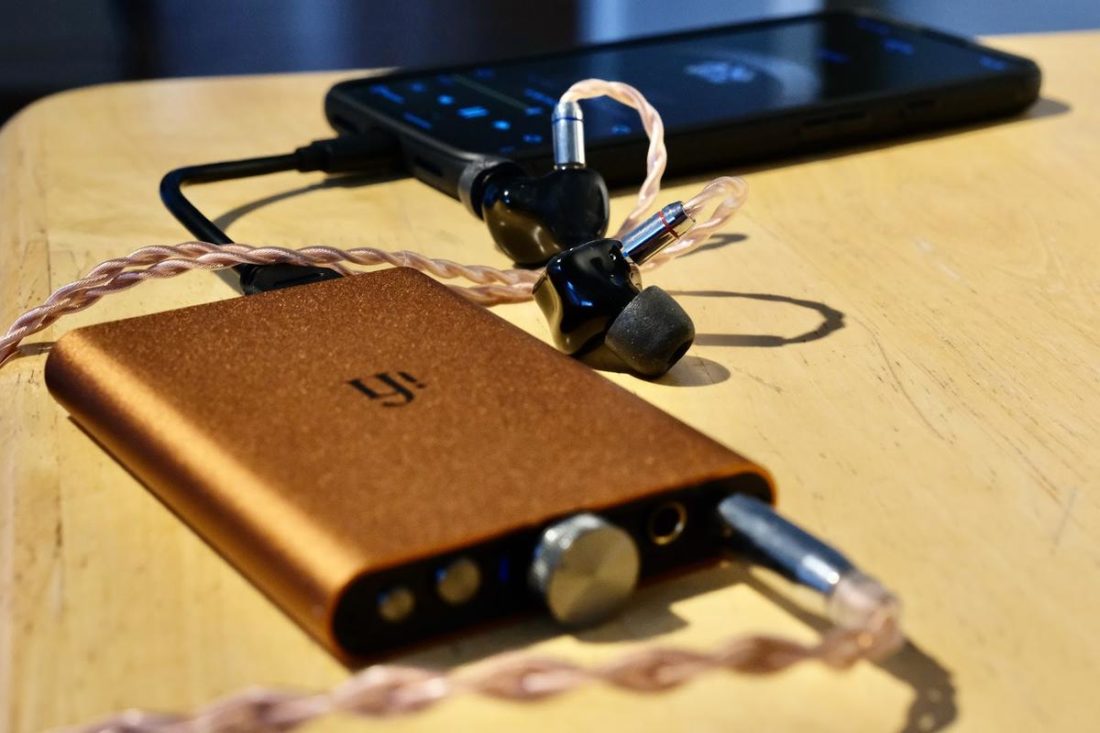
The hip-dac2 delivered a worthy improvement over stock portable device DACs.
Bass
Breaking the sound review down into the three bands further reveals the difference in experience between the IEMs and more power hungry headphones I used. There was a quantity of bass with both, but I did not find a quality of bass in both cases, with the HD650s sounding relatively muddy compared to the Kiwi Ears IEMs.
With these IEMs, which are relatively light on bass response themselves, the XBass boost helped produce a more full low end on Bambro Koyo Ganda by Bonobo, perhaps a bit much for extended listening.
Midrange
The mids were where I felt the hip-dac2 did best, providing me with good separation and detail. Again, this was better on the more sensitive IEMs, and really brought out the best on both vocals and a broad range of natural instruments. Acoustic drums had a good level of texture, although I felt they were lacking in attack compared to desktop DAC/amps I’ve used.
Treble
The top end signature is softer, more rolled-off than I would typically prefer, and on some tracks sounded simply too grainy, lacking in sparkle. The Kiwi Orchestras are relatively bright sounding IEMs, but the treble sounded more muted through the hip-dac2 than I’m used to. This was further exaggerated on my HD650s, where I was really lacking a sense of openness and space at the top end.
Where to Buy
Conclusion
It’s a compliment to iFi that I ended up comparing the hip-dac2 to more expensive desktop DAC/amps, and using it to drive demanding headphones and IEMs. What we have here is an excellent portable device that looks and feels good, is well built, and lifts listening pleasure for those who like to listen on the go. At under $200 it’s hard to fault it.
If MQA is your thing, or you’re a Tidal subscriber, the hip-dac2 should be on your shortlist. Hardware decoding is an impressive addition at this price point. There’s also broad support for Hi-Res files to ensure you get the best out of your investment in those files.
The relatively smooth sound signature isn’t going to work for everyone, and I’d definitely recommend testing this unit with your favorite headphones or IEMs before committing. I certainly had a much better time with my IEMs, and would gladly throw the hip-dac2 into my daypack to give me better listening when away from my home system.
